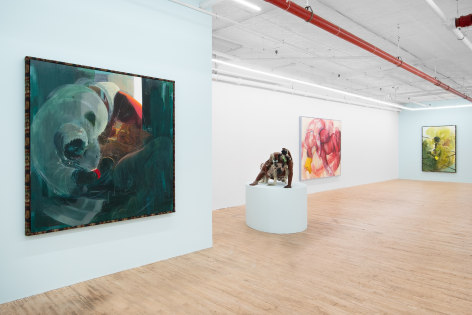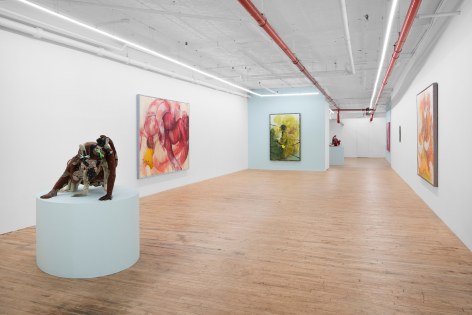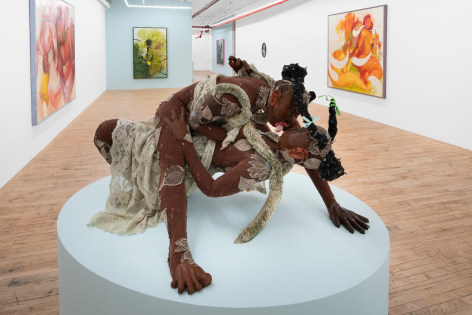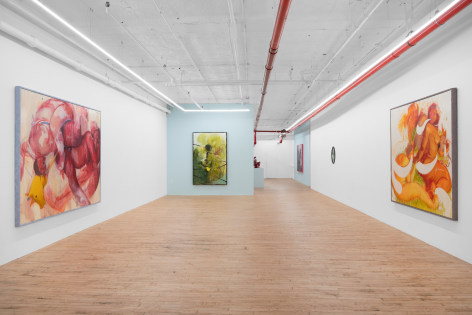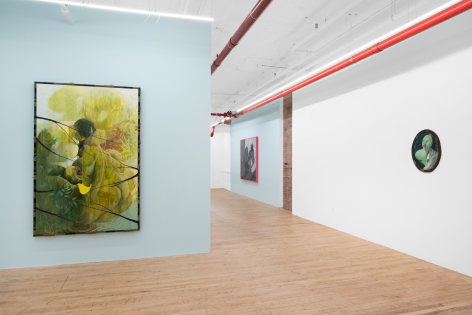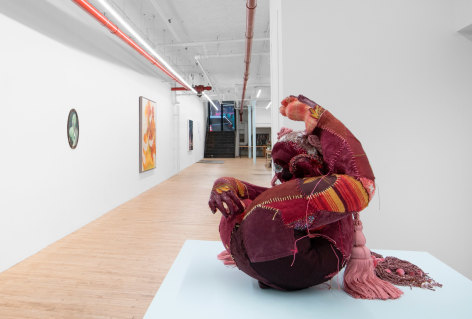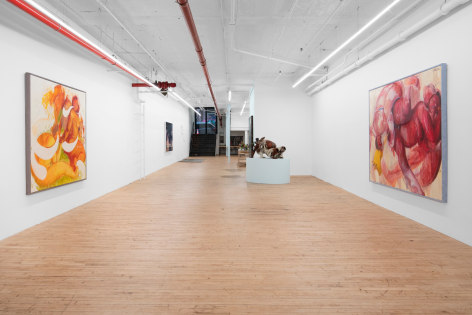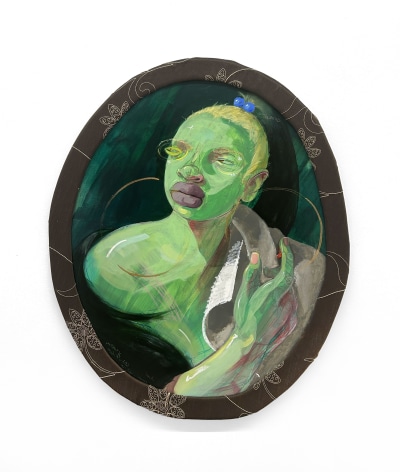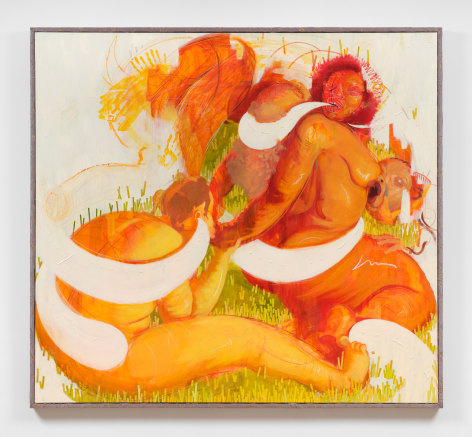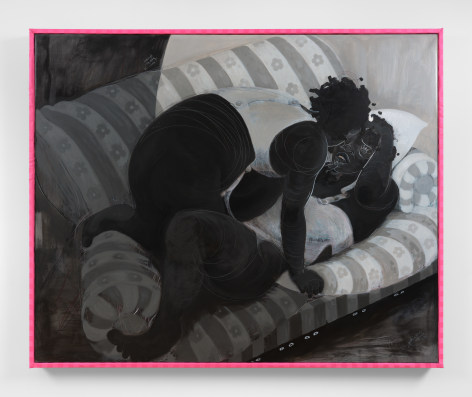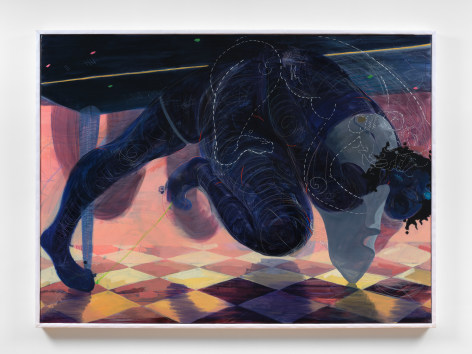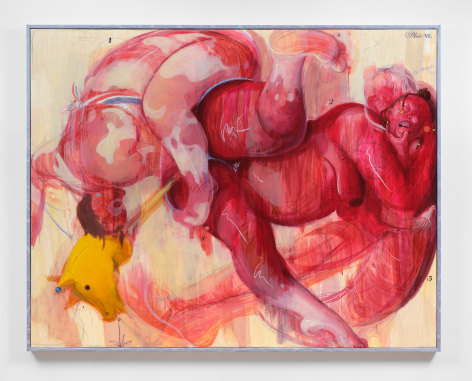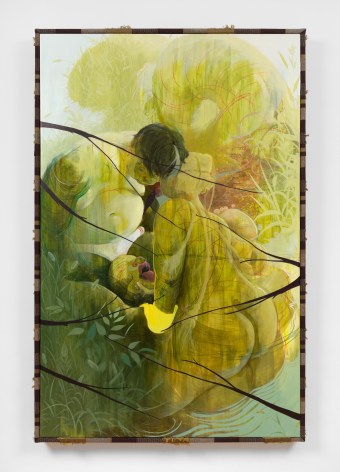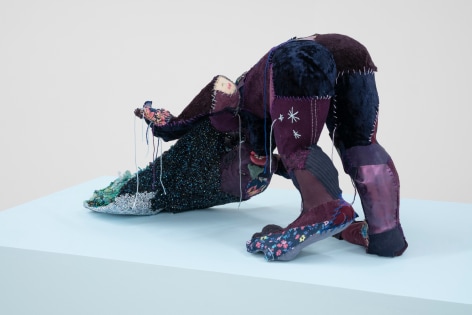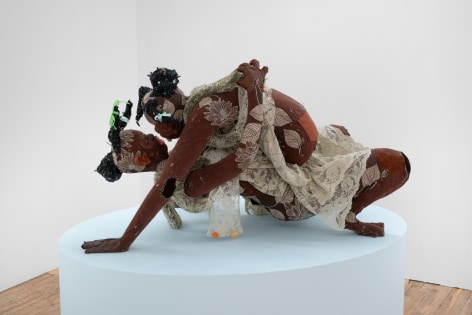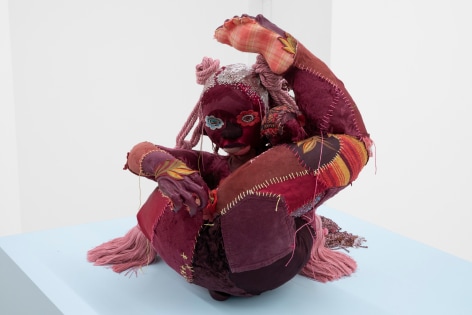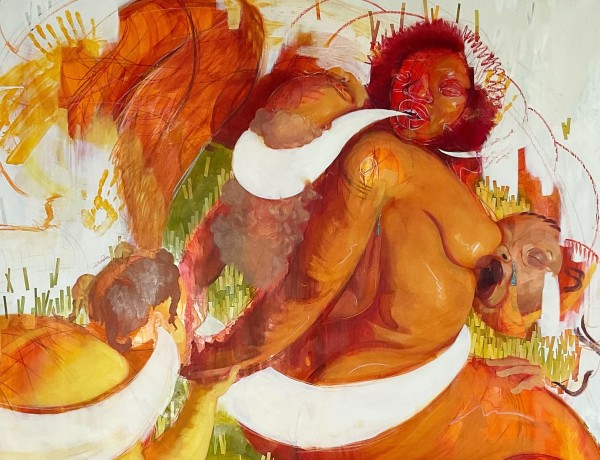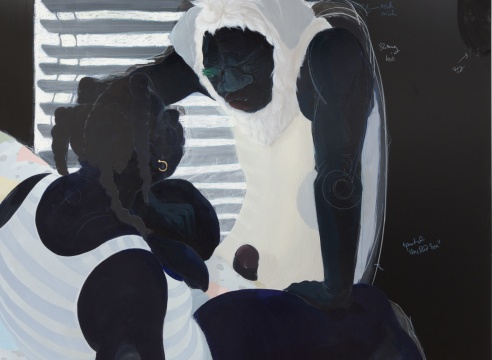
Autumn Wallace
Drawing Blood
September 8 - October 21, 2023
Gaa Gallery New York
Gaa Gallery New York is pleased to present Drawing Blood, a solo exhibition of recent paintings and sculptures by Autumn Wallace. This exhibition will be Wallace's first solo gallery exhibition in New York and fourth solo presentation with the gallery. The exhibition will run through Saturday, October 21, 2023.
"With your family, you are as planet—fixed & solitary in your orbits, & you; the coldest loneliest one,. But this is not: the you-yourself. Neither is it the truth of yr family that they are such. ;Remember the animal of you with its heat & hunger, pacing the stars & tearing them open. ;So is yr family made of need&itching bones.
- Ask Baba Yaga: Otherworldly Advice for Everyday Troubles, Taisia Kitaiskaia
In Drawing Blood, Autumn Wallace asks essential questions about our physical bodies and the bodies we become together: Where did we come from? What parts are we born from: the parts that we shed? Where do our fragments go? What is the blood that we are made of? Focusing on the concept of reproduction, the works in Drawing Blood recontextualize the processes of sexual and asexual reproduction, expanding the phenomena beyond biology into the realm of myth and personhood.
In Drawing Blood, Wallace conjures stories of mythologic and folkloric characters. From the mother witch of Slavic folklore, Baba Yaga, and the Haints of Gullah Geechee culture to creation myths where parts of one body give way to the life of another, Wallace examines myth with an intersectional lens. Exploring how mythology and folklore have functioned historically, Wallace creates a hybrid of contemporary allegory, myth, and cautionary tale in works that celebrate sexuality and examine the dynamics of care, family, and kin-making. Toggling between ancient stories and present-day experiences, Wallace mythologizes the Black femme experience, producing new folktales to generate empathy and recognition.
In the installation, a shade of pale blue appears on sections of the gallery walls and pedestals. Referencing Gullah Geechee culture and the practice of painting the ceiling of porches a pale blue to mimic water and ward off unattached spirits, Wallace initiates the space of the gallery as a safe haven.
Using visual conventions of storytelling, dynamic light, gestural mark making, and evocative color, Wallace cites a range of cultural histories, including Muzan-e prints of the Edo period, the quilts of Gee's Bends, the religious paintings and sculptures of Europe, and the character sheets of early 90's cartoons. Wallace's research for Drawing Blood draws together biblical, art historical, and cultural references along with the study of reproductive processes from a narrative and pre-scientic perspective. In these works, Wallace weaves their extant cast of characters, including B the Dog, Blankie, Diary, and Msaada, alongside a few new ones Chari, Dottie, Dyme, Guy, Sam, and Nickel, into new realms of both physical and emotional space.
Creating brief and vivid accounts, the works in Drawing Blood serve as vignettes from a larger story. Like most mythological and folkloric traditions, the characters’ full backstory appears out of frame, often building over various tales, iterations, and retellings. Some characters are made powerful by repetition–some gain potency from obscurity. Like many forms of storytelling, Wallace's works hold an internal logic. The properties of our world are exaggerated and made absurd. Objects become animate, and spaces become living entities. In this, they also offer an uncanny mirror reflecting deeper psychological truths.
Drawing on the fantastical and symbolic elements of reproduction in myth–beings born out of earth elements from time immemorial, deities reproducing pathogenetically, and fractionation in the Genesis myth–Wallace uses the concept of an entity breaking itself and multiplying across several works of Drawing Blood. In the work Fruit Loop, Dyme is born of Nickel's pinky. The Crack of Dawn features Blankie, an eternal security blanket that drifts in and out of time, appearing in tenuous situations. While maybe not of direct lineage to any of the characters in Drawing Blood, what does Blankie's recurring presence mean?
In the works from Drawing Blood, Wallace draws on another feature of many mythological stories: hair and particularly the ways in which hair can be a source of magic, power, protection, struggle, and violence. In Tenderheaded, Wallace expands the term, used within Black communities to describe pain experienced during hairstyling. Commonly identified with young Black girls, the descriptor connotes a sensitivity or heightened physical and psychological tension. In the sculptural work, Ground Beef, Sam appears, bending forward, holding her hair as both an object of love and a subject of adversary.
Examining the myriad ways living beings transform and reproduce, the work in Drawing Blood examines the spaces between animate and inanimate characters and internal and external environments. In Wallace's lush and provocative cosmos, the boundaries between plants, animals, and objects are fuzzy. Everything is activated and animated by a unique life force. In these states of being, each entity possesses power and agency. Wallace explores both the individual and the whole and the kin-making experiences that draw together different experiences. Interested in the psychodynamics of family biological and chosen, Wallace examines the nuances of relationship, narrative, and identity. In Drawing Blood, different forms of reproduction, internal and external to the body, are celebrated in all their strangeness and extraordinariness.
Wallace illuminates the stories that develop across boundaries: over the limits of time and beyond the borders of place, past the confines of interior space, between individual bodies (animal, plant, fungi) and the extremities of environmental elements (a swamp, a field, a forest, the sky). In Drawing Blood, Wallace depicts the mythogenesis of family–the ways in which families are made–with complexity but a singularity of vision. In questioning how we trace our ties to family, whether through lineage drawn from blood or by other means, Wallace underscores the messiness of obligation, the tension of care, and, in that, honors the many manifestations and the multifarious kinds of love. In examining the relationships between beings, Wallace demonstrates how they reproduce, recreate, and create each other and themselves.
Autumn Wallace (b. 1996, Philadelphia, PA) is a graduate of the Tyler School of Art at Temple University and lives and works in Philadelphia, PA. Wallace's work has been featured in solo exhibitions and presentations at The Armory Show, Gaa Gallery, New York, NY; Gaa Projects, Cologne, Germany; Gaa Gallery, Provincetown, MA; the Fine Arts Work Center, Provincetown, MA; Portside Art Parlor, Philadelphia, PA; HOUSE Gallery, Philadelphia, PA; and Stella Elkins Gallery, Philadelphia, PA. Wallace's work has also been featured in group exhibitions at Blum and Poe, Los Angeles, CA; Clearing, Brooklyn, NY; Gaa Gallery, Provincetown, MA; Gallery Vacancy, Shanghai; Margot Samel, New York, NY; and the Provincetown Art Association and Museum (PAAM), Provincetown, MA, among others. Wallace is the recipient of numerous fellowships, including residencies at the Fine Arts Work Center, Provincetown, MA; Massachusetts Museum of Contemporary Art (MASS MoCA), North Adams, MA; the Vermont Studio Center, Johnson, VT; and Yaddo, Saratoga Springs, NY. In 2021, Wallace's work was acquired by the Studio Museum in Harlem. In 2024, Wallace's work will be featured in a solo exhibition at Josh Lilley, London.

